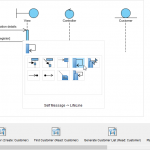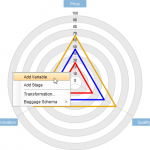Before embarking upon a detailed Architecture Definition or launch for a business initiative, it is valuable to understand the baseline and target capability level of the enterprise.
In this STEPS Wizard, you will be guided to identify the maturity gap of capabilities between the current and target business state.
Objectives
This Capability Assessment can help you to understand and identify:
- Stock taking of capability of an enterprise in a holistic view
- Visualize the capability level of an enterprise as a whole
- Identify what areas of the enterprise are required to increase or optimize capability
- Identify the architectural focus areas that will support the desired development of the enterprise
Main Steps
- You will first create a capability map that presents the future-state capabilities.
- Then, assess the current and target maturity level of the capabilities;
- And finally, study the gap and state how the target capability states can be accomplished.

Try it in Visual Paradigm
Before we continue, if you are using Visual Paradigm you can click the button below to import this tutorial into Visual Paradigm and perform the steps in the form of a wizard.
Open this Wizard in Visual ParadigmStep 1: Develop baseline capability map
Create a structured overview of the capabilities as-is by developing a baseline capability map. A capability map typically shows one or two levels of capabilities across the entire enterprise. Although it is possible to expand capabilities to more levels, especially when the business model is complex, doing so may make the map over complex and hard to comprehend. So we recommend a two level decomposition here.
The figure below shows a capability map example.
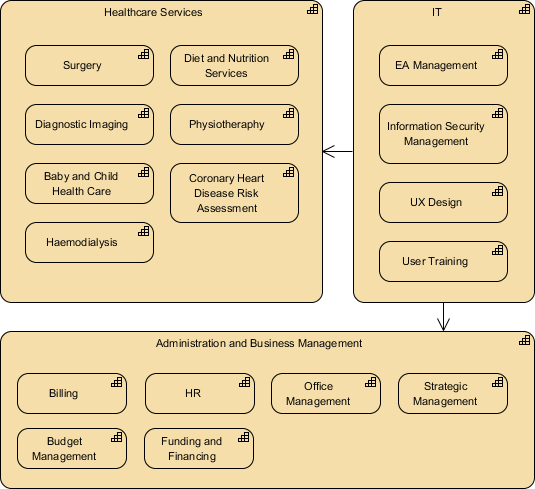
Step 2: Develop a baseline capability heat map
Produce a color-coded heat map that presents the maturity of the capabilities for the CURRENT business state. You need to use the Color Legend feature to indicate the level of maturity for each of the capabilities on the map. There are five color code to select from the legend, each represents a unique level of maturity a capability stands, scaled from 1 to 5, and with 5 represents a highly available capability.
The steps below shows you how to use Color Legend to set the maturity level of a capability.
1. For each of the capabilities identified, determine its maturity level.
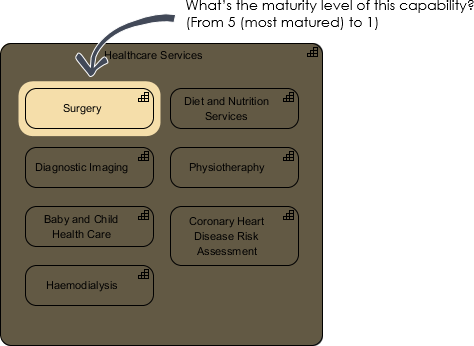
2. Select the type from the Color Legend at the bottom right of the diagram.

3. Click on the capability to apply. The capability should then be colorized following your selection. If you want to update your choice, perform step 2 again.

4. Repeat steps 1 to 3 on the other capabilities.
The figure below shows an example of a baseline capability heat map.

Tips:
What is a Capability Heat Map?
First of all, let's agree on the definition of what is a capability map. Capability map is a structured overview of capabilities within a problem space (e.g. IT, business, enterprise, etc). A capability map presents the logical grouping, de-composition and inter-relationships among capabilities, allowing readers to identify not just the capabilities of a business but also the way how they are collaborated in supporting the operation. A capability heat map (or capability heatmap) is where the capabilities contained in the map are colored based on a specific attribute. In this STEPS wizard, we use heat map to represent the maturity level of capabilities.
Step 3: Develop a target capability heat map
Determine the maturity level to achieve for the identified capabilities. Again, for each capability, select the level of maturity to achieve, scaled from 0 to 5. Assign a level of 0 to capabilities that will be deprecated after a successful business transformation. Do NOT delete them, as we want to contrast the entire set of the baseline capabilities (including the one going to be deleted) against with the target capabilities
The figure below gives an example of the target capability heat map. Comparing to the baseline capability heat map, some of the maturity level of capabilities are changed (e.g. ‘Surgery’), and new capabilities are introduced (e.g. ‘Digital Health’). To make comparison easier, we indicate ‘0’ as the maturity level for a capability to be removed, instead of removing the capability from the map.
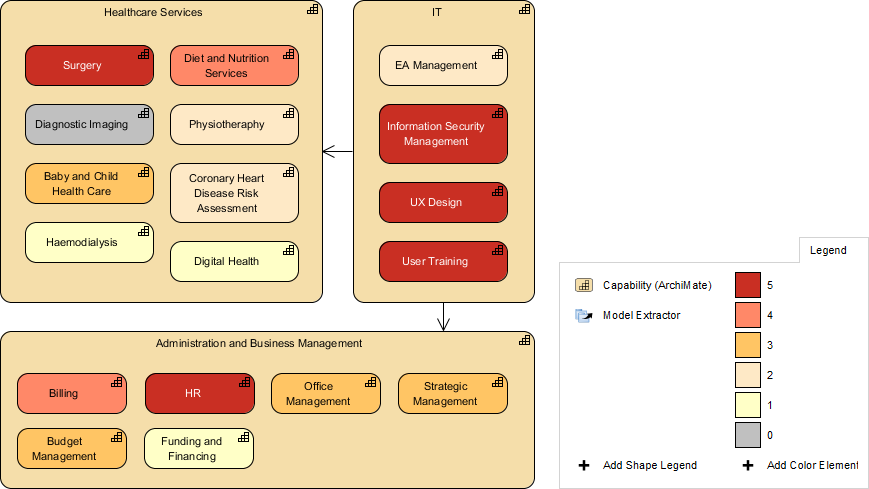
Step 4: Review and describe the maturity gaps
The maturity delta between the current and target state capabilities are identified from the capability maturity model. Positive deltas imply capabilities that require strengthening or be invented (for capabilities that are absent right now), while negative deltas imply capabilities that require downgrading or be removed from the business.
Now, study the capabilities, their current and target maturity levels, and maturity delta. Then, state how the target capability states can be accomplished. For example, if it’s expected that a capability has to reach a higher maturity level, what activities need to be performed to realize this? If a capability will be made deprecated, what measures will be taken to mitigate the potential impacts that will arise?
The figure below shows how maturity gaps can be rationalized.
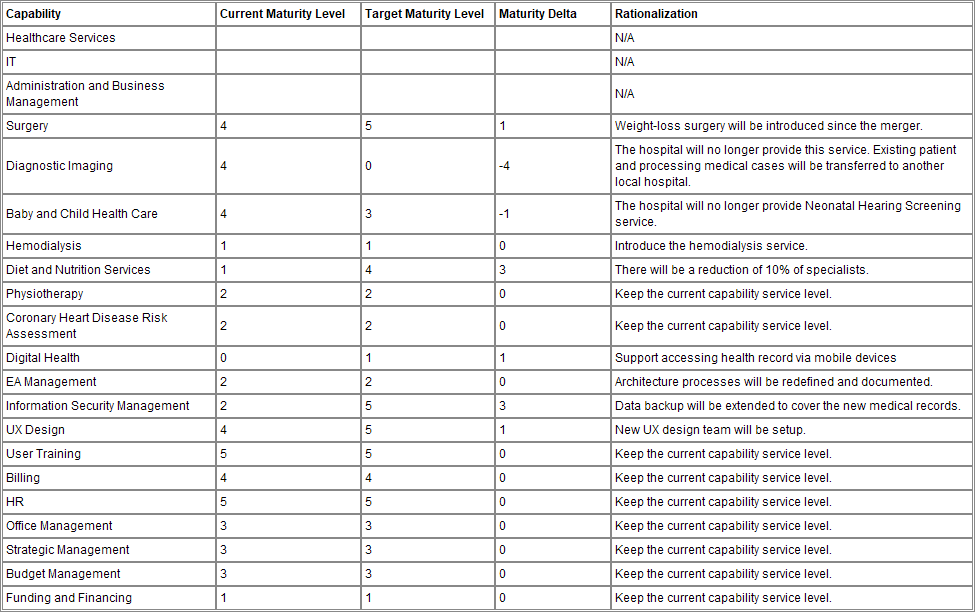
Ready to try?
Click the button below to import this tutorial into Visual Paradigm and start developing MVC Sequence Diagrams for your system. The wizard not only provides the steps and guidance but also automates the transition of data among steps.
Open this Wizard in Visual Paradigm
Import into your Project
Open diagram in Visual Paradigm [?]Copy the URL below, paste it in the Open Project windows of Visual Paradigm and press Enter to open it |


